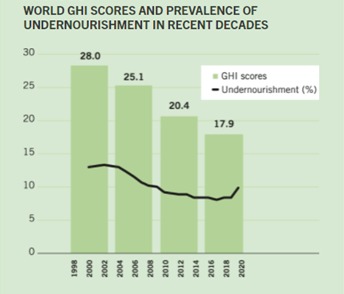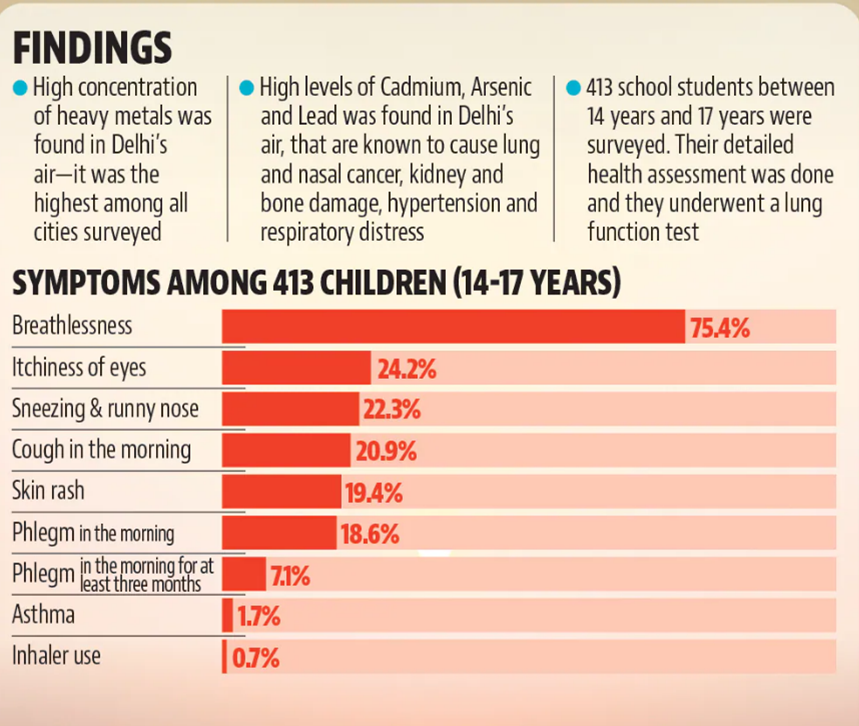Wednesday, 20th October 2021
High Ambition Coalition
In News
Recently, India joined the High Ambition Coalition (HAC) for Nature and People.
About the News
- India officially joined the High Ambition Coalition, a group of more than 70 countries encouraging the adoption of the global goal to protect 30x30.
- India joining the High Ambition Coalition, on the eve of the opening of COP15, will be a game changer and will boost India’s multilateral efforts.
- India is a major player for biodiversity protection, and thus can augment the HAC coalition, which aims to promote an international agreement to protect at least 30 % the of world's land and ocean by 2030.
About the HAC
- About: The High Ambition Coalition (HAC) for Nature and People is an intergovernmental group of 70 countries co-chaired by Costa Rica and France and by the United Kingdom as Ocean co-chair.
- Origins: HAC was initiated at the “One Planet Summit” in Paris in January 2021.
- Members: HAC members currently include a mix of countries in the global north and south; European, Latin American, Africa and Asia countries are among the members.
- India is the first of the BRICS (Brazil, Russia, India, China and South Africa) countries to join it.
- Goals: The HAC aims to protect at least 30% of the planet’s lands and seas by 2030 at the 15th Conference of the Parties to the Convention on Biological Diversity.
- Promoting nature-based solutions within the UN Framework Convention on Climate Change COPs.
Why do we need 30x30?
- In order to address both the biodiversity crisis and the climate crisis, there is growing scientific research that half of the planet must be kept in a natural state.
- Experts agree that a scientifically credible and necessary interim goal is to achieve a minimum of 30% protection by 2030.
- Currently, an estimated 15% of the world’s land and 7% of the ocean are protected. In order to achieve the goal of protecting at least 30% by 2030, we'll need to double the current land protections and more than quadruple current ocean protections.
Sources:
Geospatial Energy Map of India
In News
A Geospatial Energy Map of India has been recently launched by NITI Aayog.
Geospatial Energy Map
- About: NITI Aayog in collaboration with Indian Space Research Organisation (ISRO) has developed a comprehensive Geographic Information System (GIS) Energy Map of India with the support of Energy Ministries of Government of India.
- Mapping of Energy Resources: The Map shows spatial and non-spatial data of conventional power plants (thermal and hydro), renewable energy power plants at district-level, coal mines, petroleum refineries, solar energy and wind energy resource potential and other energy related assets of India through 27 thematic layers.
- Mapping of Networks: The map would attempt to identify and locate all primary and secondary sources of energy and their transportation/transmission networks to provide a comprehensive view of energy production and distribution in a country.
- Technology Used: It leverages the latest advancements in web-GIS technology and open-source software to make it interactive and user friendly.
What will be the benefits of the Geospatial Energy Map?
- Holistic Picture: The map would provide a holistic picture of all energy resources of the country scattered across multiple organizations and present it in a consolidated, visually appealing graphical manner.
- Real time and Integrated Planning: It will ensure real-time and integrated planning of energy sector of India, given its large geographical distribution and interdependence.
- Efficiency gains: GIS-based mapping of energy assets will provide efficiency gains as it will help in resource and environmental conservation measures and interstate coordination across energy corridors.
- Tool for Policy making: It acts as a key tool for policymakers as it helpful for investors, conservationists, financial institutions and disaster management authorities.
- Geospatial Planning: It will be useful for geospatial planning of resources such as infrastructure planning for upcoming solar parks, coal blocks, crude oil, natural gas pipelines and investment guidance for financial institutions.
- Aid in disaster management: It will be useful in disaster management in case of possible energy disruption and emergency response, safety of energy assets due to harsh climatic conditions.
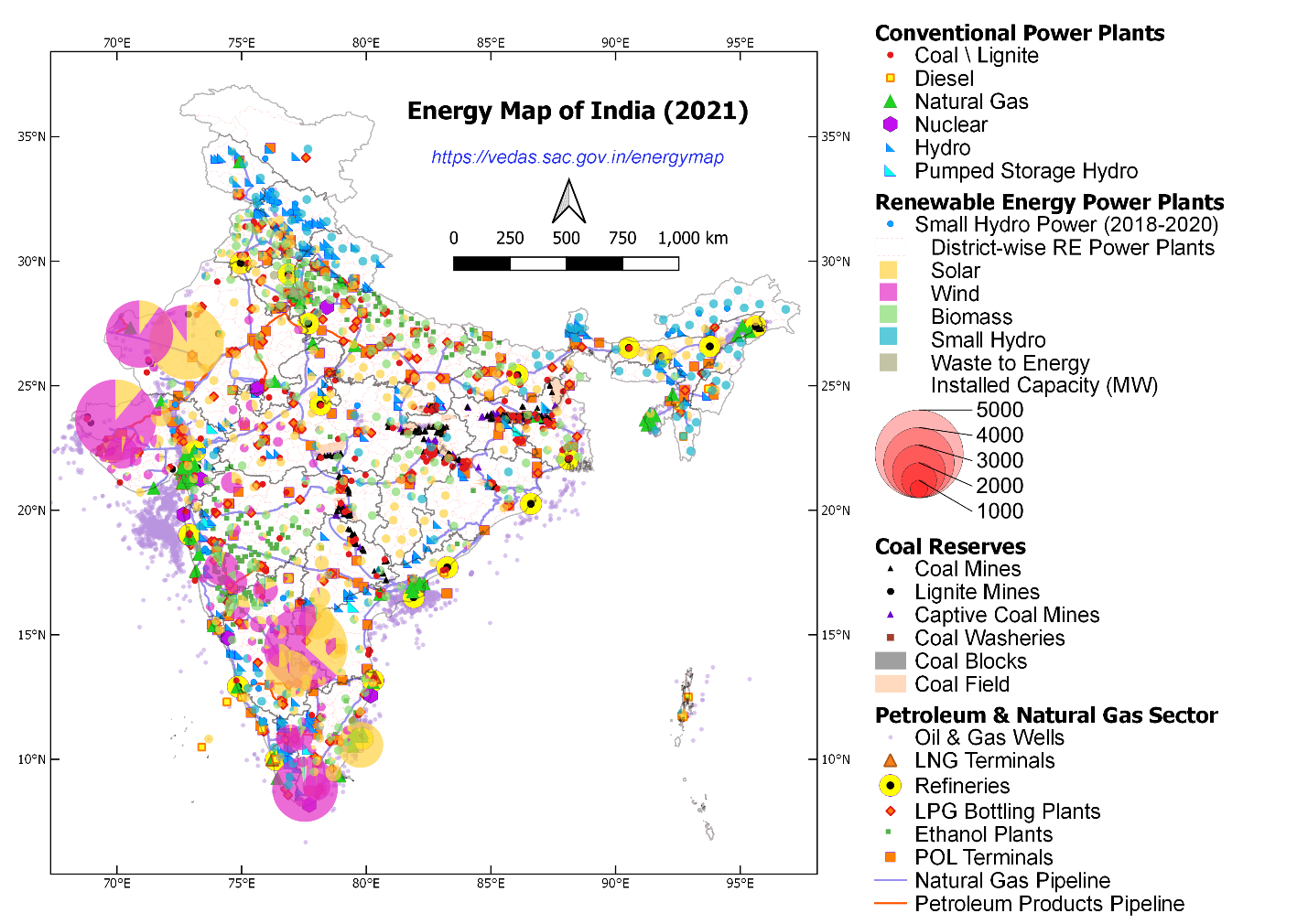
Sources:
- NITI Aayog Launches Geospatial Energy Map of India
- OVERVIEW
- NITI Aayog unveils geospatial energy map of India
- Geospatial Energy Map of India
Sources:
Comprehensive Tobacco tax policy
In News
The government has set up an expert group to prepare a comprehensive tax policy proposal covering all tobacco products from a public health perspective.
About the News
- About the Panel: The nine-member panel is led by Vikas Sheel, additional secretary in the health ministry and includes representatives of the GST Council, NITI Aayog, WHO country office for India, etc.

- Mandate: The mandate of the group includes
- Analyzing current tax structure of all forms of tobacco, including smokeless tobacco.
- Suggesting various tax rate models for consideration in the preparation of FY23 and future Union budgets.
- Vision of the reform: The idea is to have a road map for reducing tobacco demand as per World Health Organization’s (WHO's) plans. India has the second largest number (268 million) of tobacco users in the world.
- Tobacco Burden of India: India has the second largest number (268 million) of tobacco users in the world. Nearly 27% of all cancers in India are due to tobacco.
- The annual economic costs from all diseases and deaths attributable to tobacco use is estimated to be ₹177,341 crores in 2017-18 amounting to 1% of India’s GDP. This will continue to grow post covid-19.
- Need for reform: The total tax burden (taxes as a percentage of final tax inclusive retail price) is only about 52.7% for cigarettes, 22% for bidis and 63.8% for smokeless tobacco. This is much lower than the WHO recommended tax burden of at least 75% of retail price for all tobacco products.
- Why now: Increasing tax/cess will be a winning proposition for generating revenue in current finance starved times and for reducing tobacco use and related diseases as well as covid-related comorbidities.
Current steps taken by the Government to disincentivize tobacco consumption
- Tobacco at present is a highly taxed It is kept in the 28% GST slab (other than for tobacco leaves which is taxed at 5%).
- Tobacco and its various forms are also subject to a heavy burden of cess, given that the commodity is seen as a sin good/demerit good (whose consumption is harmful).
- The government also uses pictures of cancer patients on the packages of cigarettes to discourage its use.
Source:
National Urban Digital Mission
In News
In another digitisation push, the Union government has unveiled ‘National Urban Digital Mission’ a move to create digital infrastructure for cities across the country.
Need for Digital Mission for Urban areas
- For Economic Growth: India has been the fastest growing major economy in the world, with an average growth of 7% from 2017-18 to 2018-19.
- It is the world’s seventh largest economy by nominal Gross Domestic Product (GDP) and the third largest by purchasing power parity (PPP). India aspires to become a USD 5-trillion economy by 2024 and a USD 10-trillion economy by 2030.
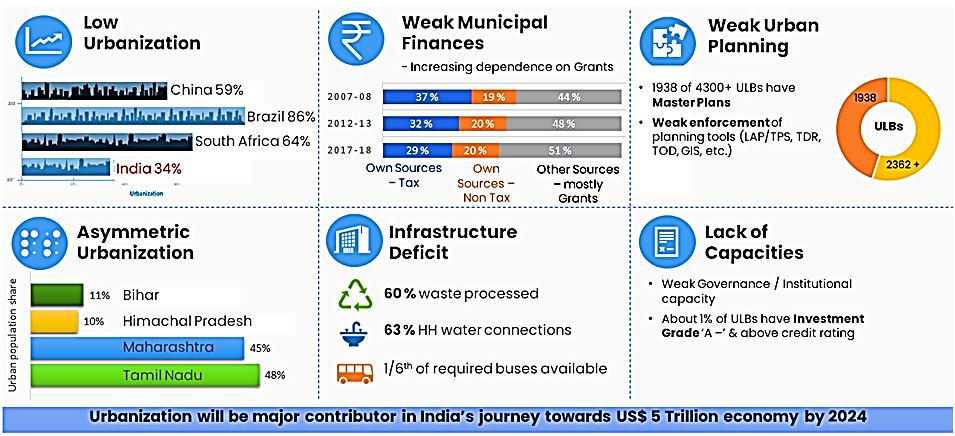
- Urban Challenge: Indian cities suffer from inefficiencies of service delivery and severe stress on infrastructure.
- Inherent problems in Current Approach
What is National Urban Digital Mission (NUDM)?
- About: National Urban Digital Mission aims to build the shared digital infrastructure that will strengthen the capacity of the urban ecosystem to solve complex problems at scale and speed.
- It is built as a public good and provides the ecosystem actors the foundational digital building blocks, ready-to-use platforms, standards, specifications, and frameworks.
- Opportunity: India is already using public digital infrastructures like JAM (Jan Dhan-Aadhar-Mobile), IndiaStack and UPI to address crucial needs at speed and scale.
- The NUDM will streamline and coordinate efforts of the urban ecosystem by harnessing technology to leapfrog our urban transformation journey.
- Vision: To improve the ease of living for citizens by creating a national urban digital ecosystem that delivers accessible, inclusive, efficient and citizen centric governance in India’s 4400 towns and cities.
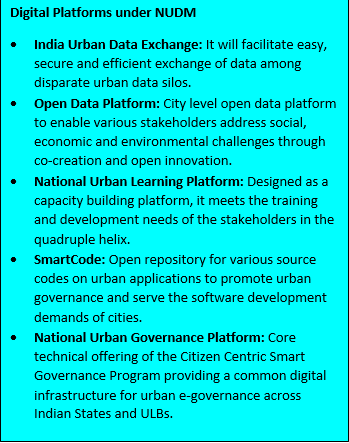
- Approach: NUDM will be rolled out across three key pillars
- People: Mobilise, enable and empower stakeholders across the urban ecosystem
- Processes: Improve governance through standards and frameworks for collaboration and impact
- Platforms: Leverage technology in service of an improved quality of life for every citizen

How will NUDM work?
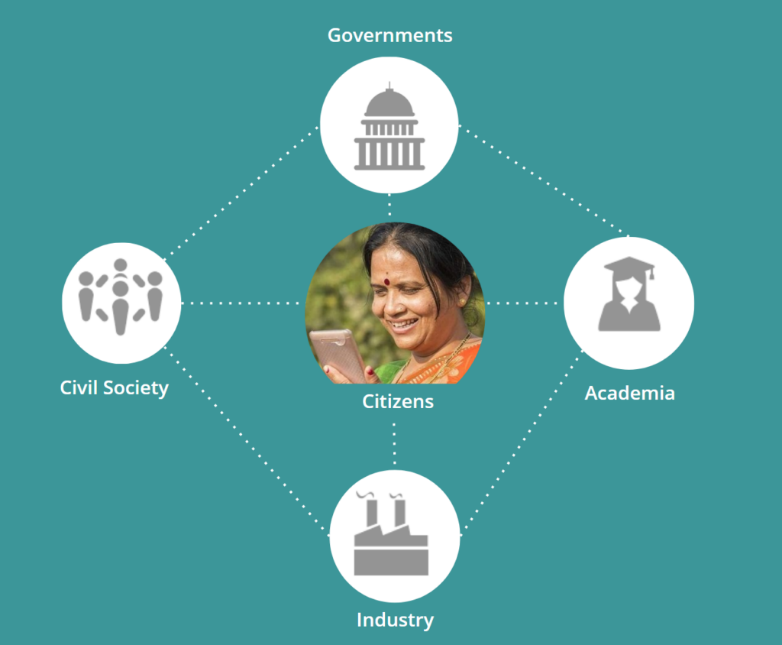
- The NUDM will be anchored by the Centre for Digital Governance (CDG) at the National Institute of Urban Affairs (NIUA).
- The NIUA is India’s leading national think tank on urban planning and development. Established in 1976, NIUA was tasked to bridge the gap between research and practice on issues related to urbanization, and suggest ways and mechanisms to address urban challenges in the country.
- CDG’s approach is built on a foundation of Design, Architecture, Enterprise and Ecosystem Thinking.
- CDG works with stakeholders across the quadruple helix (Governments, Civil Society, Industry and Academics) to facilitate collaborations among diverse skill sets and accelerate adoption of digital urban governance.
- CDG will establish six practice areas to work:
- Governance: Formulation of various model policies, frameworks and documents for digital governance and providing advisory services.
- Platforms: Provide critical digital infrastructure as a public good. Example Digital Sandbox like U-Box. U-Box would act as the one-stop-shop and offer Innovation-Support-as-a-Service for the entire urban development sector.
- Partnerships: Forge strategic linkages to galvanise the ecosystem. Example: State & City Engagement, Academia, Engagements, Industry Affiliations, Startup Engagements.
- Learning: Build and nurture capacities in urban professionals and address demand based capacity building needs of the ecosystem. Example: Mission-linked Capacity Building, Taxonomy & Tagging, Assessment & Certificate
- Research: Facilitate knowledge sharing and insights for spurring the urban innovation. Example: Data & Analytics, Evidence-based policy, Knowledge Products, Impact Assessment
- Communications: To build a shared narrative on digital technology for urban development. Example: Peer-to-Peer Collaboration, Best Practice Sharing, Awards Recognition
How will NUDM break the Vicious Cycle of Under-development of Urban areas?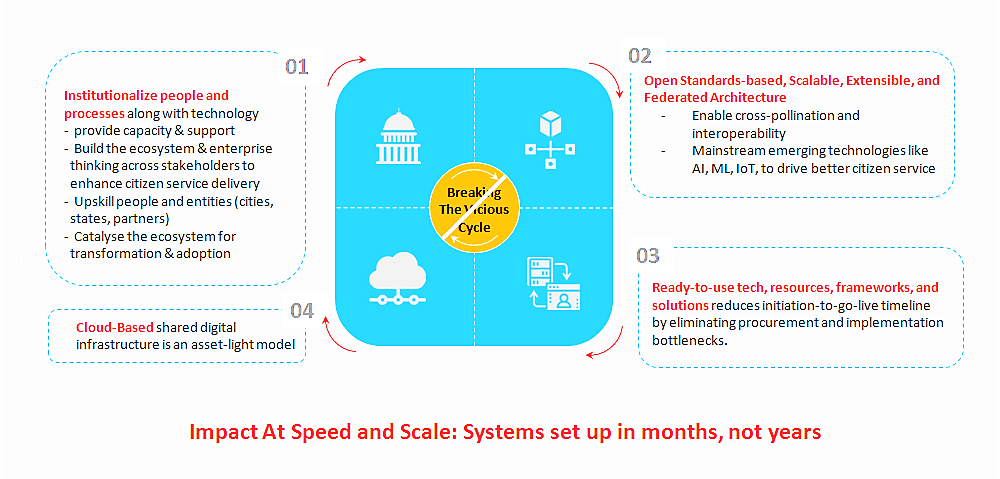
Conclusion: India has more than 4400 cities and towns, and it is essential that the “long tail of small cities” are empowered to deliver on the promise of serving all citizens. The National Urban Digital Mission will streamline and coordinate the various efforts MoHUA has taken to support and enable ULBs. By building systems to make cities self-reliant and capable of rising to their local challenges, NUDM will help realise the vision of an Atma Nirbhar Bharat.
Question: Discuss the need for developing digital infrastructure in urban areas in India. How will NUDM build an effective urban digital infrastructure?
Sources:
This Day in History - Valmiki Jayanti
October 20, 2021 Valmiki Jayanti will be celebrated in India, as this day falls on the full moon day in the month of Ashwin, as per the Hindu Calendar. Valmiki Jayanti is observed on the birth anniversary of Maharishi Valmiki, the sage who wrote the Ramayana. The day is also observed as Pragat Diwas. Maharishi Valmiki is believed to have transformed from a dacoit to a saint. Maharishi Valmiki is believed to have transformed from a dacoit to a saint.
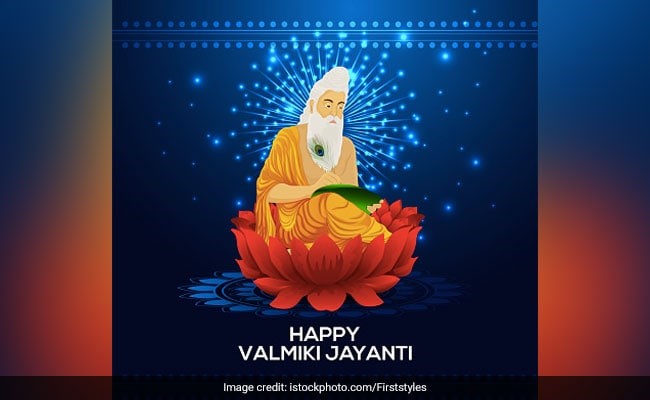
Source:
Image of the Day - The Nebra Sky Disc
This is image of the the Nebra Sky Disc, which is which is thought to be the world’s oldest concrete depiction of stars. The bronze disc, which depicts the world’s oldest representation of “specific astronomical phenomenon” had five phases over its history. In the first phase, the disc illustrated the night sky with 32 gold stars, including the Pleiades, a hold orb representing the sun or a full moon and a crescent moon. This illustration served as a reminder of when it was necessary to synchronise the lunar and solar years by inserting a leap month. About 3,600 years ago, the disc was ritually buried along with two swords, axes, two spiral arm-rings and one bronze chisel near Nebra in Germany. The exact purpose of the disc cannot be determined, hypotheses about its existence have imagined it as an astronomical clock, a work of art and a religious symbol.
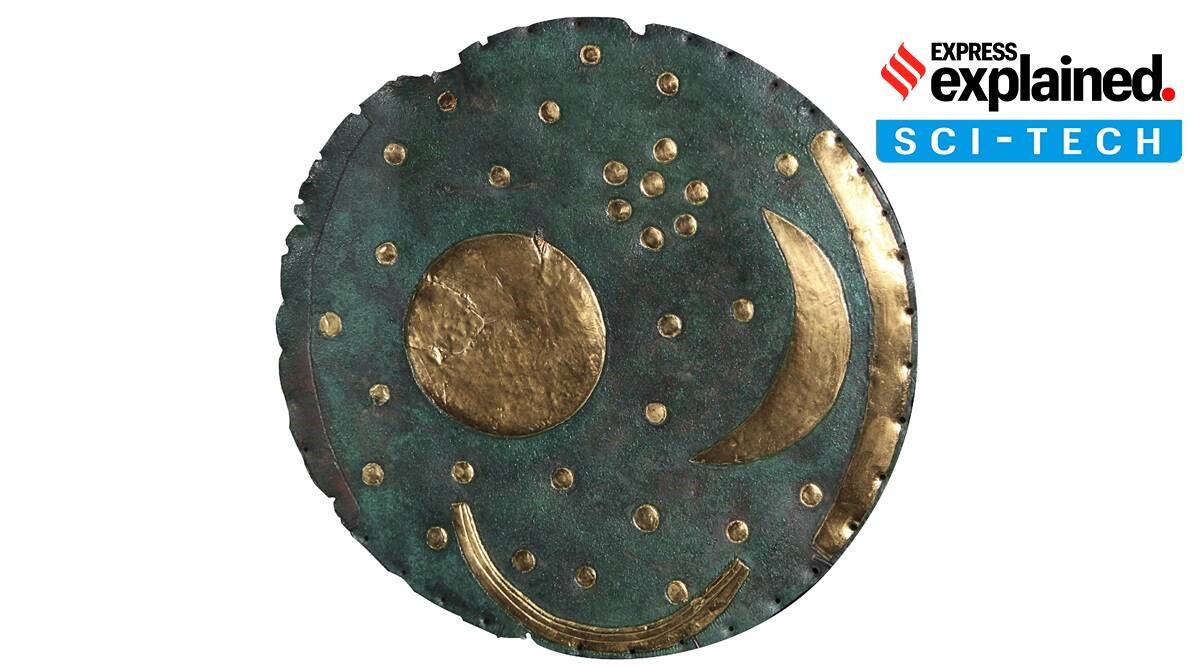
Source:
Hypersonic Glide Vehicle/Hypersonic Missiles
- Context: The Chinese military has launched a rocket that carried a hypersonic glide vehicle,
- The glide vehilce flew through low-orbit space before cruising down towards its target.
- A hypersonic missile is a vehicle that achieves a speed five times faster than the speed of sound, crossing Mach 5.
- These missiles are launched into space on a rocket but orbit the earth under their own momentum.
- They travel at a speed of around 6,115 km per hour, with a combination of technology and manoeuvrability of ballistic missiles and cruise missiles.
- However, they do not follow the fixed parabolic trajectory of a ballistic missile and are manoeuvrable, making them harder to track and intercept.
- Most of the hypersonic vehicles primarily use the scramjet technology. Scramjets are a category of engines designed to handle airflows of speeds in multiples of the speed of sound.
- Hypersonic technology has been developed and tested by both DRDO and ISRO. In September, 2020 DRDO successfully flight-tested the Hypersonic Technology Demonstrator Vehicle (HSTDV), with a capability to travel at 6 times the speed of sound.

Sources:
- China tests new space capability with hypersonic missile
- Explained: China’s hypersonic glide vehicle test
- Explained: What is hypersonic glide missile that China tested
Image Source:
Mount Harriet to Mount Manipur
- Context: The Union Government has decided to rename Mount Harriet to Mount Manipur in tribute to freedom fighters.
- Manipur’s Maharaja Kulchandra Singh and 22 other freedom fighters were imprisoned during the Anglo-Manipuri war (1891), at the Mount Harriet in Kalapani
- Considered an epoch in the history of Manipur, the Anglo-Manipur War was fought between the kingdom of Manipur and the British over a month in 1891.
- Mount Harriet is the third highest peak in the Andaman and Nicobar Islands, and served as the summer headquarters of the Chief Commissioner during British Raj.
- It is believed to be named after British artist and photographer, Harriet Christina Tytler.
- Mount Harriet National Park is located here. The main feature of Mount Harriet is its fauna and natural flora.
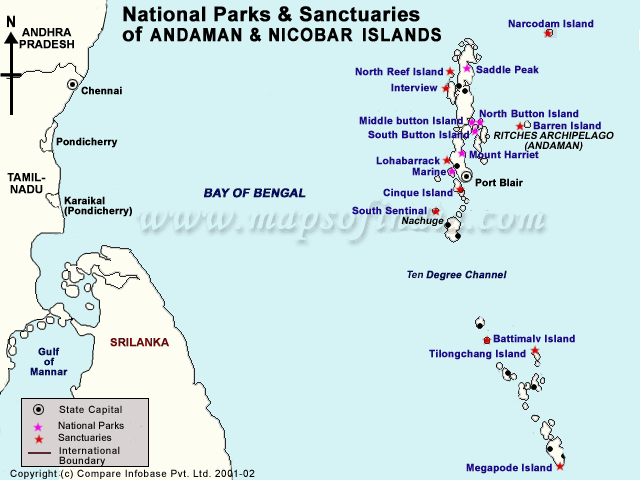
Sources:
- Mount Harriet in Andaman to be named Mount Manipur in tribute to freedom fighters
- Manipur breaks into celebration as Centre renames Andaman's 'Mount Harriet' as 'Mount Manipur'
- Mount Harriet National Park
Image Source:
Army Air Defence and Modernisation
- Context: The Army Air Defence (AD) is looking at major progress in the next few months in terms of deals and trials.
- These include additional indigenous Akash Surface to Air Missile (SAM) systems, the under development Medium Range Surface to Air Missile (MRSAM) and Igla-S Very Short Range Air Defence (VSHORAD) Systems from Russia.
- Akash is the indigenously designed and developed medium range SAM system with a range of 25 km.
- MRSAM being developed by India's Defence Research and Development Organisation (DRDO) in collaboration with Israel Aerospace Industries (IAI) is an advanced network centric combat air defence missile system designed to provide point and area air defence for ground assets against a wide range of threats.
- Igla-S is a man-portable air defense system designed to defeat all types of visible fixed- and rotary-winged aircraft on head-on as well as small aerial targets like cruise missiles around the clock under induced thermal and background noise.
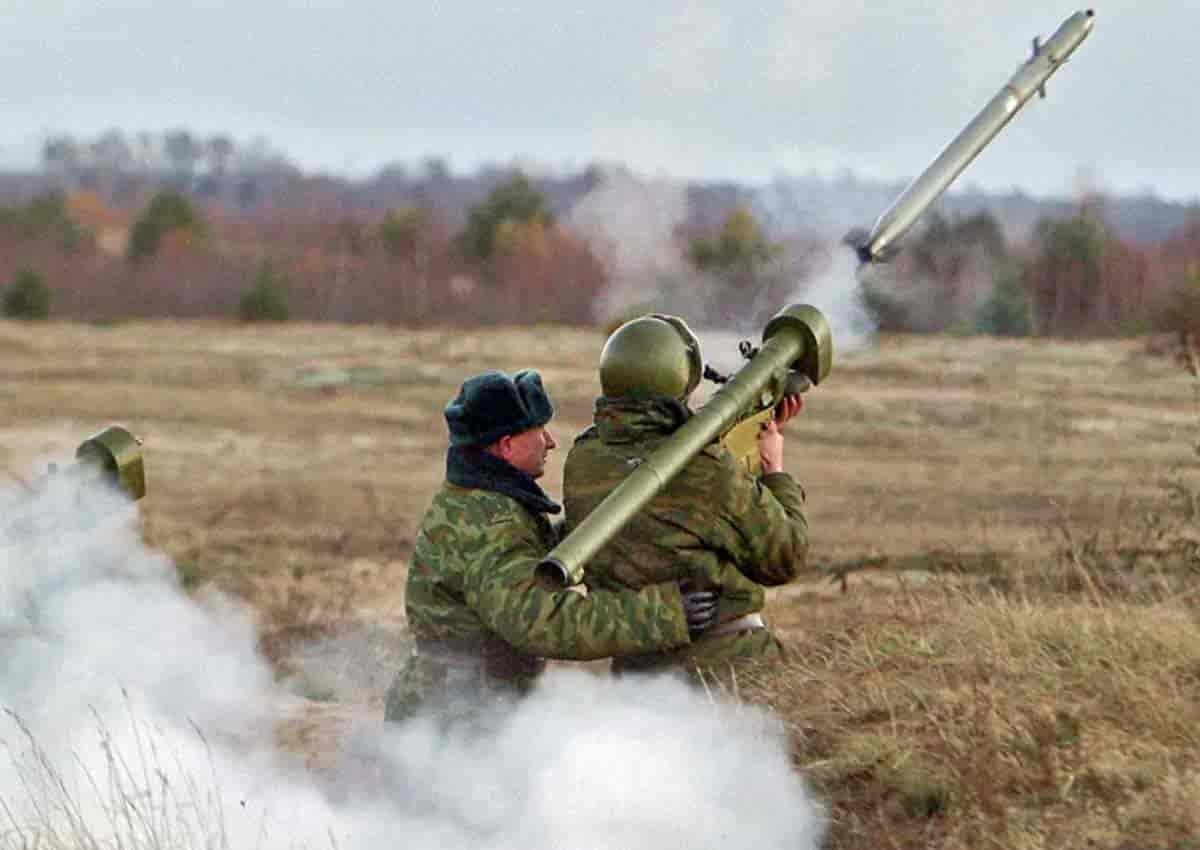
Sources:
- After delays, Army Air Defence looks at leap in modernisation
- Indian Air Force inducts MRSAM air defence missile system
- Igla S
Image Source:
Allium negianum
- Context: A plant that was discovered in Uttarakhand in 2019 has been newly confirmed as a new species of Allium.
- The genus Allium contains about 1,100 species worldwide, including many staple foods like onion, garlic, scallion, shallot and chives to which the newly discovered plant species belong.
- The plant has been named Allium negianum, in the border area of Malari village, in Chamoli district of Uttarakhand.
- It grows at 3,000 to 4,800 m above sea level. It is usually found along open grassy meadows, sandy soils along rivers, and streams forming in snow pasture lands along alpine meadows, where the melting snow helps carry its seeds to more favourable areas.
- It has a narrow distribution where the species is restricted to the region of western Himalayas and hasn’t yet been reported from anywhere else in the world.
- Although new to science, this species has long been known under domestic cultivation to local communities and is even deemed the best on the market.

Source:
Image Source:
Why farm income in India is so low: BL
Essence: The article has presented an analysis of the report of the ‘Situation Assessment of Agricultural Households and Land and Holdings of Households in Rural India 2019’. The report has revealed a steep fall in income of farm households from crop cultivation and major income is from wages and farming of animals. The average monthly income is more than ₹10,000 only in 12 States and in the range of ₹4,013-9,995 for 16 States.
The author has suggested reforms like to increase the farm income, price and market-related interventions, which are needed to move away from production-centric approach to a market-centric approach. The article also suggests strengthening of procurement infrastructure, and encouragement of producers’ markets throughout the country. Other steps such as efficient implementation of schemes such as Price Support Scheme, Price Deficiency Payment Scheme and Private Procurement Stockiest Scheme (PM AASHA), swift action during the period of glut and reducing the cost of cultivation would help in raising the farm incomes.
Why you should read this article?
- To know about the status of farm incomes in India.
- To understand the solutions for increasing farm income.
Source:
EU, India and the Indo-Pacific: IE
Essence: EU strategy for cooperation in the Indo-Pacific which was released recently is important in the context of the rapprochement between the EU and India. This strategy appears to be a reaction to China’s expansionism in the South and East China Sea and in the Taiwan Strait. In the strategy, India finds mention only in the list of countries which already have an Indo-Pacific strategy and with which the EU is interested in a deeper engagement and there is no mention of India’s role in value-chain diversification. The strategy is focused more on trade, economic cooperation, human rights and engaging China at the same time than on the security and centrality of India to Indo-Pacific.
Why you should read this?
- To know about the objectives of the EU Indo-Pacific strategy.
- To understand the importance and the role of India in this strategy.
- To know about the difference between the visions of Germany, France and UK the Indo-Pacific.
Source:
Climate crisis: Why India must focus on adaptation: HT
Essence: The Article focuses on reimagining of several State-run social sector programmes to acclimatize and customize itself to the growing climatic catastrophes. Article suggests two fundamental approaches to India to meet its climate goal. One, integrate climate adaptation, disaster risk resilience and Sustainable Development Goals (SDGs) in development policies, including public and private expenditure. Second, reorient mitigation as a subset of both adaptation and the country’s socio-economic aspirations. Besides, State-run social sector programmes, local development plans at the block and panchayat levels need to focus on developing climate-resilient systems with Centre’s support. Though India has taken the lead in climate action by spearheading initiatives, but we need to form a coherent, people-driven, and collaborative adaptation strategy at the national, state, and local levels. The current state action plans on climate change must be revised and upgraded to evidence-based and outcome-orientated strategies; these must be flexible, inclusive, and developed using a bottom-up approach.
Why should you read this article?
- To get an overview of climate crisis impact on India and India’s readiness to tackle the same.
- Challenges associated with climate crisis in India and what could be the possible steps India should take to tackle the same.
Source:
YouTube Channel as the Master Class for Farmers
Background
- Agriculture being the most important sector, imbibing knowledge in a layman’s language or local language becomes all the more necessary to the farmers.
- A duo from Maharashtra, Akash Jadhav and Santhosh Jadhav, hailing from the farming family, launched a YouTube channel to address this issue.
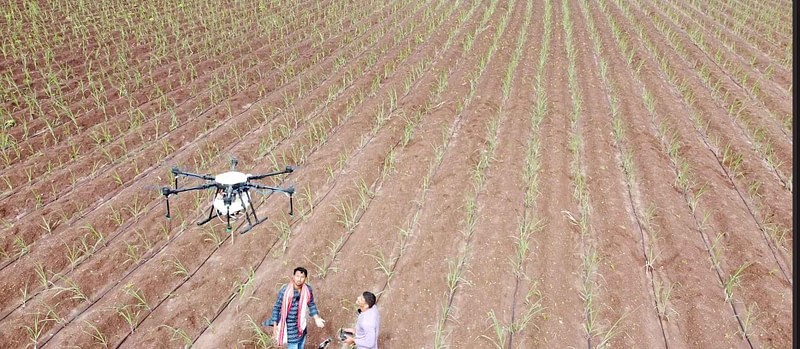
YouTube Channel as the Master class
- Bringing out information about new techniques of farming like input oriented, process development or output management techniques.
- First-hand knowledge to the farming community as they can empathise since they belong to the same roots.
- Thorough research through the online platforms and delivery in the simple language makes it better for understanding.
- Ground research and study help better address the core issues faced by the farmers.
- Provides ‘jugaad’ for easy access to various techniques that can be employed in the farm.
Quote:
"Imagination is more important than knowledge. For knowledge is limited, whereas imagination embraces the entire world, stimulating progress, giving birth to evolution."— Albert Einstein
Source:
Share the article
Get Latest Updates on Offers, Event dates, and free Mentorship sessions.

Get in touch with our Expert Academic Counsellors 👋
FAQs
UPSC Daily Current Affairs focuses on learning current events on a daily basis. An aspirant needs to study regular and updated information about current events, news, and relevant topics that are important for UPSC aspirants. It covers national and international affairs, government policies, socio-economic issues, science and technology advancements, and more.
UPSC Daily Current Affairs provides aspirants with a concise and comprehensive overview of the latest happenings and developments across various fields. It helps aspirants stay updated with current affairs and provides them with valuable insights and analysis, which are essential for answering questions in the UPSC examinations. It enhances their knowledge, analytical skills, and ability to connect current affairs with the UPSC syllabus.
UPSC Daily Current Affairs covers a wide range of topics, including politics, economics, science and technology, environment, social issues, governance, international relations, and more. It offers news summaries, in-depth analyses, editorials, opinion pieces, and relevant study materials. It also provides practice questions and quizzes to help aspirants test their understanding of current affairs.
Edukemy's UPSC Daily Current Affairs can be accessed through:
- UPSC Daily Current Affairs can be accessed through Current Affairs tab at the top of the Main Page of Edukemy.
- Edukemy Mobile app: The Daily Current Affairs can also be access through Edukemy Mobile App.
- Social media: Follow Edukemy’s official social media accounts or pages that provide UPSC Daily Current Affairs updates, including Facebook, Twitter, or Telegram channels.

